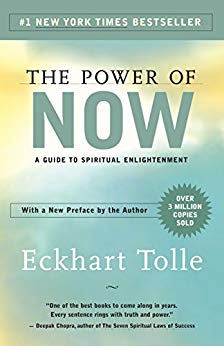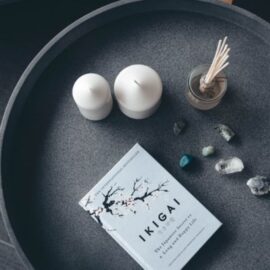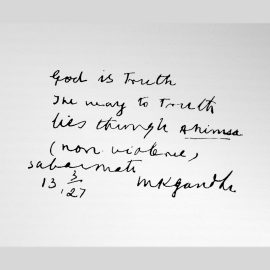

This article is an excerpt from the Shortform summary of "The Power of Now" by Eckhart Tolle. Shortform has the world's best summaries of books you should be reading.
Like this article? Sign up for a free trial here .
What exactly is a “pain-body”? What experiences trigger your emotional pain-body to activate?
In The Power of Now, the emotional pain-body is an abstract entity composed of all the negative and painful emotions you’ve experienced throughout your life. Your pain-body is triggered when you encounter a stimulus (e.g. a conversation, a thought, a situation) that hits a nerve with a familiar pain pattern from the past.
Keep reading to learn about the concept of the pain-body. We’ll discuss what the pain-body is, what triggers it, and how you can separate from it.
What Is the Emotional Pain Body?
The emotional pain-body is the invisible entity of pain that accumulates through your life. This starts with painful experiences from childhood, and every experience that brings you emotional pain is added to the collection.
As an accumulation of emotions, the emotional pain-body is ultimately a product of the ego that prevents you from being present and feeling inner peace.
Not all pain-bodies are created equal. Some people have lived through more frequent or more severe pain, creating greater pain-bodies. Additionally, each pain-body has different triggers and different levels of sensitivity to those triggers.
- Some people’s pain-bodies are dormant most of the time, only awakening when something triggers them. Others, including many chronically unhappy people, have pain-bodies that are active virtually all the time. These people have likely made their pain-body part of their identity.
- Some pain-bodies are nagging but less destructive, causing depression or irritation. Other pain-bodies are physically or emotionally violent, attacking those around you or attacking you — their host — with negative thoughts and feelings, even leading to suicide.
Identifying With the Pain-Body Only Brings More Pain
Like the ego, the pain-body only has the power to survive and thrive if you identify with it. When the pain-body’s negativity — whether anger, depression, self-pity, or resentment — takes over your thoughts, you are identifying with it. When you do so, you’re feeding into the pain and creating more of the negative energy that strengthens it. And when the pain-body is in control, you are not present.
Many of us live our lives identifying with our pain-bodies to some degree, believing those hardships make us who we are. If you’ve long identified with your pain-body, you may resist letting it go; it can feel like losing your identity (e.g. Who are you without your survivor story?).
But when you stop identifying with your pain-body, you can free yourself from carrying that pain and being consumed in the negative energy it creates. This also allows you to be present and connect with your true Being.
How to Separate From Your Pain Body
The emotional pain-body is a product of the ego, and the way to separate your true self from the ego is to observe it. So to disconnect from your pain-body, you must observe it when it awakens; resist engaging with the thoughts, emotions, and negative energy the pain-body creates.
Separating yourself can be very difficult because the pain-body accumulates so much negative energy that it creates a powerful force of negative thoughts and emotions. You have to focus deliberately on observing these without getting sucked in.
When you observe your pain-body — even if it’s just for a moment, before the negative energy pulls you back in — you can see that there is a part of you that is not consumed by your pain-body, that is merely witnessing it. What’s more, with time and practice you begin to learn your pain-body’s tricks and tendencies. The more you do this, the more power you have to stop identifying with the pain-body and break its power over you.
As you observe your pain-body, do not judge: Don’t call it bad or good. Don’t blame yourself for feeling that way or succumbing to the pain-body’s power. Don’t blame others for triggering it. Just observe it.
- St. Paul said, “Everything is shown up by being exposed to the light, and whatever is exposed to the light itself becomes the light.” Your presence and awareness are the light that exposes the pain-body.
Notice how you may be attached to your pain-body by wanting to talk about it or think about it. This is a way of creating more negative energy, and is likely a habit you formed from years of identifying with it.
Even after you’ve separated yourself from the pain-body, it may still have some momentum and take time to wind back down to dormancy. You may even feel temporary physical aches and pains while the pain-body is subsiding.
Exercise: Recognizing Your Emotional Pain-Body
Pain is part of the human experience, and every person has an emotional pain-body; it can be triggered by thoughts or actions, and then both spews and feeds on negative energy. In this exercise, you will reflect on your individual pain-body.
What’s a painful experience from your past that is part of your pain-body? This is an emotional scar that gets triggered easily by other events, and then consumes your thoughts and emotions.
Think of a time when something or someone hit a nerve tied to this particular pain. What was said or done that activated that part of your pain-body? And how did you react when it was triggered?
What kinds of situations or conversations are likely to trigger that pain again in the future?
———End of Preview———

Like what you just read? Read the rest of the world's best summary of "The Power of Now" at Shortform . Learn the book's critical concepts in 20 minutes or less .
Here's what you'll find in our full The Power of Now summary :
- Why you feel pain from the past, and how to get rid of it
- How to be more present and stop worrying about the future
- The 8 key ways to achieve mindfulness






